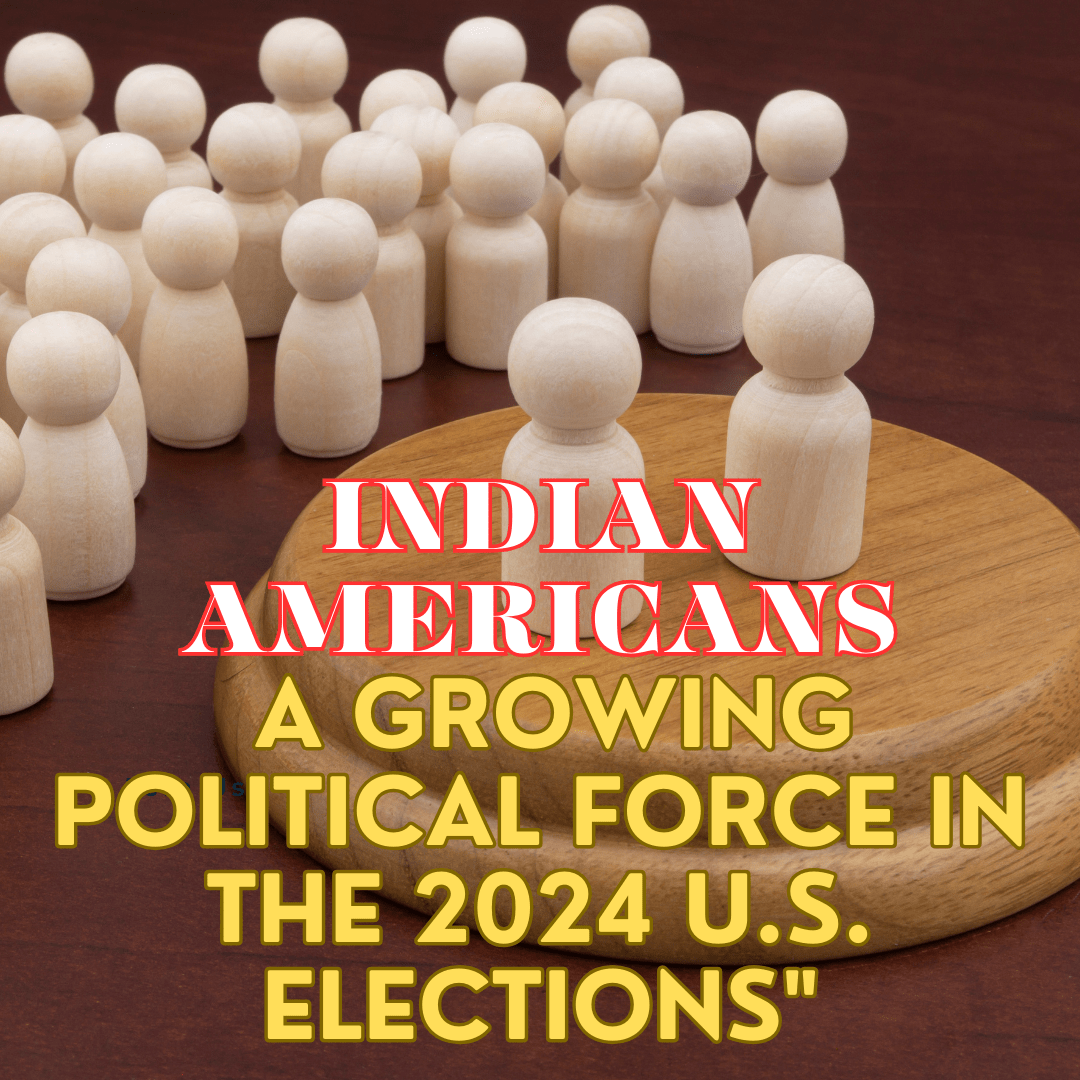Physical Address
304 North Cardinal St.
Dorchester Center, MA 02124

The 2024 U.S. elections are shaping up to be heavily influenced by a demographic that is rapidly gaining prominence: This vibrant community is not only expanding in numbers but also becoming increasingly politically engaged, making its mark on American politics. As political analysts and observers delve into the nuances of this demographic shift, it becomes evident that Indian Americans are a force to be reckoned with.
Indian Americans currently comprise approximately 1% of the total U.S. population, a figure that has been steadily increasing. According to the Pew Research Center, the Indian American population in the U.S. grew from 1.5 million in 2000 to nearly 4 million in 2020 (Pew Research Center, 2021). This growth is particularly pronounced among younger voters, who are increasingly identifying as politically active and engaged. As a community known for its entrepreneurial spirit and educational achievements, Indian Americans are carving out significant influence in U.S. politics.
Several factors contribute to the rising political involvement of Indian Americans:
Historically, have voted in lower numbers compared to other demographic groups. However, recent trends indicate a shift. In the 2020 elections showed increased voter turnout, with estimates suggesting that around 65% of eligible voters in this community participated in the election (Kumar, 2021). This engagement is expected to rise in the upcoming elections as political organizations focus on mobilizing this demographic.
While have traditionally leaned toward the Democratic Party, a growing faction identifies with the Republican Party, especially among younger voters and those in business sectors. The shifting party dynamics indicate a complex landscape for political parties as they seek to engage and appeal to this diverse community.
The increasing political participation of Indian Americans has resulted in a growing presence in local, state, and federal offices. Notable figures include:
These politicians not only represent the community but also serve as role models for future generations, inspiring increased political engagement among their constituents.
As Indian Americans prepare to cast their votes in the 2024 elections, several key issues resonate deeply within the community:

Grassroots organizations play a vital role in mobilizing voters. Groups such as the Indian American Impact Fund and South Asian Americans Leading Together (SAALT) have been instrumental in educating the community about the electoral process, advocating for voter registration, and promoting civic engagement (Patel, 2020). These organizations empower Indian Americans to exercise their voting rights and become active participants in democracy.
Political candidates are increasingly recognizing the importance of engaging with the Indian American community through cultural events, town halls, and outreach programs. These interactions foster a sense of belonging and demonstrate candidates’ commitment to addressing the concerns of this growing demographic. By actively participating in community events, candidates can connect with voters on a personal level, increasing their chances of gaining support.
As we approach the 2024 elections, the growing political force of is undeniable. This community is not only influencing local and national elections but also shaping the broader political landscape of the United States.
The intersection of Indian American identity with other demographic groups highlights the complexity of American politics. With increasing diversity, candidates must navigate a multifaceted electorate, taking into account the unique perspectives and needs of various communities. This diversity presents both challenges and opportunities for political candidates as they strive to create inclusive platforms.
Despite the progress made, challenges remain. Issues of representation, equity, and accessibility continue to be barriers for many within the community. Political parties must prioritize inclusivity and actively address these challenges to gain the support of this vital demographic.
Organizations such as the Indus Valley Leadership Institute and South Asian American Digital Archive (SAADA) have played a critical role in fostering community engagement among Indian Americans. By offering resources, training, and support, these organizations empower individuals to participate in the political process and advocate for their needs (Mehta, 2022).
In recent years, have demonstrated their growing influence in local elections. For example, candidates of Indian descent have successfully run for city councils and school boards across the country. Their victories not only reflect the community’s political engagement but also highlight the importance of representation at all levels of government.
The rise of as a political force is a testament to the power of community engagement, cultural pride, and the quest for representation. As political analysts observe this demographic shift, it is crucial for Indian Americans to continue advocating for their interests, participating in the electoral process, and holding elected officials accountable.
The upcoming 2024 U.S. elections present an opportunity for to further solidify their role in shaping American politics. By understanding the key issues, engaging with political candidates, and mobilizing the vote, this community can ensure its voice is heard loud and clear in the halls of power.
As we witness the evolving political landscape, stand at the forefront, ready to make their mark. Their growing influence is not just a reflection of changing demographics but also a harbinger of a more inclusive and representative democracy. The future of American politics is bright with the active participation of Indian Americans, and their journey is just beginning.